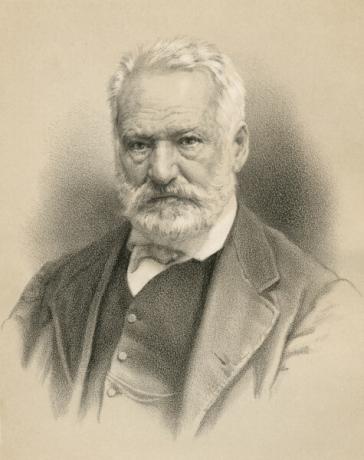O Romanticism it was a movementaesthetic and cultural which revolutionized society in the 18th and 19th centuries, leaving behind classical values and inaugurating the modernity in the arts. Romantic works were then based on values of bourgeoisie, social class that replaced the absolutist elite in several countries.
authors
Romanticism is one of the greatest art movements of the 18th and 19th century. Therefore, hundreds of authors were part of romantic art. It is possible to highlight, among them, the writers
Goethe, from Germany;
Lord Byron of England;
Camilo Castelo Branco and Almeida Garret, from Portugal;
Victor Hugo, from France;
Gonçalves Dias, Álvares de Azevedo, Castro Alves and José de Alencar, of Brazil.

Johann Wolfgang von Goethe is one of the great names of German Romanticism and the author of “The sufferings of the young Werther”.
Features
O Romanticism, in each country, has its peculiarities. However, it is possible to notice some common values in several nations that developed this aesthetic, namely:
self-centeredness (the individual is seen as the center of the world);
sentimentality exacerbated;
Nationalism;
Idealization of love and of the women;
Tonedepressive (typical of several romantic authors, being easily found, among them, a speech that exalts the escapeof reality, whether by death, whether by the dream or even by the art itself).
Read too: Women and Brazilian Poetry
phases
It is possible to identify, observing the set of romantic works produced in several countries, at least three trends or phases of this art:
ultrasentimental romanticism: Works like The Sufferings of Young Werther, by the German Goethe, or even some poems by Lord Byron, from England, present a strong sentimentality, generally depressive, exalting the death Or the craziness like leaks of a disastrous reality. In Brazil, Álvares de Azevedo can be read as an author who dialogues with this romantic trend.
social romanticism: Having as its main exponent the French writer Victor Hugo, author of classics such as The miserable and Notre-Dame de Paris (also known as The Hunchback of Notre-Dame), this romantic aspect is characterized by representing the misery of the people and report at social ills that occurred with the marginalized parts of society.
nationalist romanticism: Still under the influence of Victor Hugo, as well as dialoguing with fundamental historical facts to understand the 18th and XIX (such as the French Revolution or, in Brazil, the arrival of the Royal Family in 1808), several authors built works with strong tone nationalist. The movement Indianist Brazilian, produced by authors such as Gonçalves Dias and José de Alencar, dialogues with this trend.

Victor Hugo was a French novelist, poet, playwright, essayist, artist, statesman and human rights activist.
Historical context
The main historical facts relating to Romanticism are:
French Revolution (1789-1799);
Invasion of Portugal by troops from Napoleon Bonaparte (1807);
Arrival of the Royal Family in Brazil (1808);
Independence of Brazil (1822).
Romanticism in Brazil
The initial milestone of the Brazilian romantic movement was the publication of the book Poetic Sighs and Longing, in Gonçalves de Magalhães, in 1836.
In poetry, it is possible to identify at least three generations of Brazilian Romanticism: the iIndianists, you ultra-romanticand the çotters.
In prose, José de Alencar was the main writer, and his works portray Brazilian society in their environments urban, rural or yet mythological — as in the case of novels iracema and The Guarani, which seek to describe the myth of the creation of the Brazilian people as a mixture between Indians and Europeans.
Romanticism in Portugal
Portuguese Romanticism can be understood in two phases:
First moment: authors such as Almeida Garrett and Alexandre Herculano thematize, in their works, questions historical and politics that involved Portugal at the time.
second moment: authors such as Camilo Castelo Branco bring Romanticism in Portugal closer to the most sentimental and egocentric, enlarging the strokes ultra-romantic of aesthetics.
Read too: Five poems from Portuguese Literature
Construction
The main works of Romanticism, in each country, are:
Germany
Goethe
The Sufferings of Young Werther (1774)
France
Victor Hugo
The miserable (1862)
Notre-Dame de Paris (1831)
England
Lord Byron
Don Juan (1824)
⇒ Portugal
Almeida Garrett
travels in my land (1846)
Camilo Castelo Branco
perdition love (1861)
⇒ Brazil
Gonçalves Dias
second corners (1848)
Latestcorners (1851)
YouTimbiras (1857)
corners (1857)
Álvares de Azevedo
LiraFromTwenty years (1853)
NightatTavern (1855)
Cassimiro de Abreu
springs (1859)
Castro Alves
foamsFloating (1870)
YouSlaves (1883)
José de Alencar
the guaraní (1857)
iracema (1865)
til (1871)
Lady (1875)
Summary
O Romanticism it was the art style of the mid-18th and 19th centuries. In general, romantic works bear marks of the rise of the values of the bourgeoisie, which, at the time, surpassed the absolutism.
The romantic movement had representations in several countries, and, to better understand Romanticism in the Brazil, it is interesting to know, at least, the romantic aesthetics of Germany, France, England and Portugal. Some of main authors of this movement are: Goethe, Victor Hugo, Lord Byron, Almeida Garrett and Camilo Castelo Branco.
By M. Fernando Marinho

